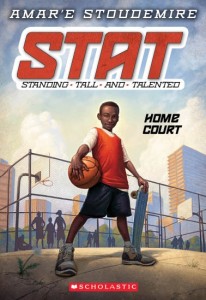What It's About:
The town of Journey's End may not literally be at the end of the world, but it sure feels like it to Nolie Stanhope. Spending the summer with her scientist father in the tiny Scottish village isn't exactly Nolie's idea of a good time, but she soon finds a friend: native Journey's Ender Bel McKissick.
While Nolie's father came to Journey's End to study the Boundary--a mysterious fog bank offshore--Bel's family can’t afford to consider it a threat. The McKissick’s livelihood depends on the tourists drawn by legends of a curse. Still, whether you believe in magic or science, going into the Boundary means you'll never come back.
…Unless you do. Albert Etheridge, a boy who disappeared into the Boundary in 1914, suddenly returns--without having aged a day and with no memory of the past hundred years. Then the Boundary starts creeping closer to the town, threatening to consume everyone within.
While Nolie's father wants to have the village evacuated, Bel's parents lead the charge to stay in Journey's End. Meanwhile, Albert and the girls look for ways to stop the encroaching boundary, coming across an ancient Scottish spell that requires magic, a quest, and a sacrifice.
First Lines:
"Albert Macleish woke up early on the morning he disappeared.
It had to be early is he was to leave without his mum and da noticing, so it was still murky and dim when he opened the front gate and slipped out into the quiet, rutted lane that ran past his house..."
Impressions:
I'm just in love with this cover! Spooky Scotland seems to be all the rage this year, Earlier this year, I reviewed Janet Fox's THE CHARMED CHILDREN OF ROOKSKILL CASTLE, and if you liked that I believe you will like Rachel Hawkin's JOURNEY'S END also. The friendships are strong, the fog is scary, and who doesn't feel the hairs on the back of their necks prickle when you hear the words "ancient Scottish spell that requires magic, a quest, and a sacrifice"?
About The Author:
Rachel Hawkins is the author of the Hex Hall series. She lives in Alabama.
 |
| Rachel Hawkins' Tumblr photo |
10/24: The Reading Nook
10/25: Buttermybooks
10/26: Once Upon a Twilight
10/27: Novel Novice
10/28: In Wonderland
10/31: Middle Grade Mafioso
11/1: Green Bean Teen Queen
11/2: YA Bibliophile
11/3: Stories & Sweeties
11/4: The Book Wars






